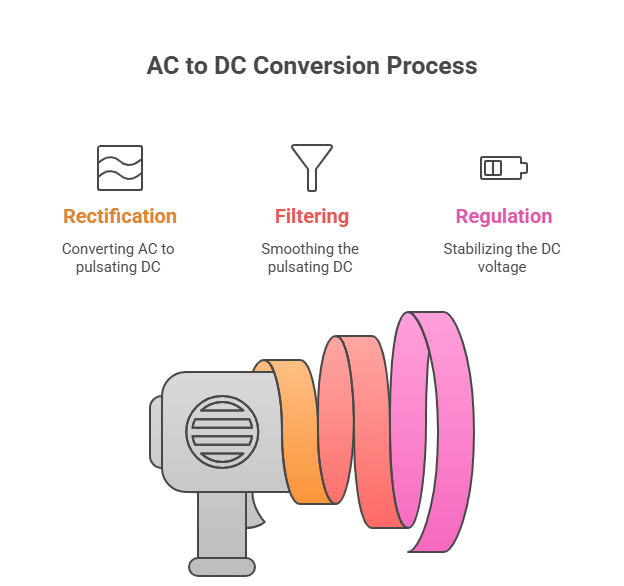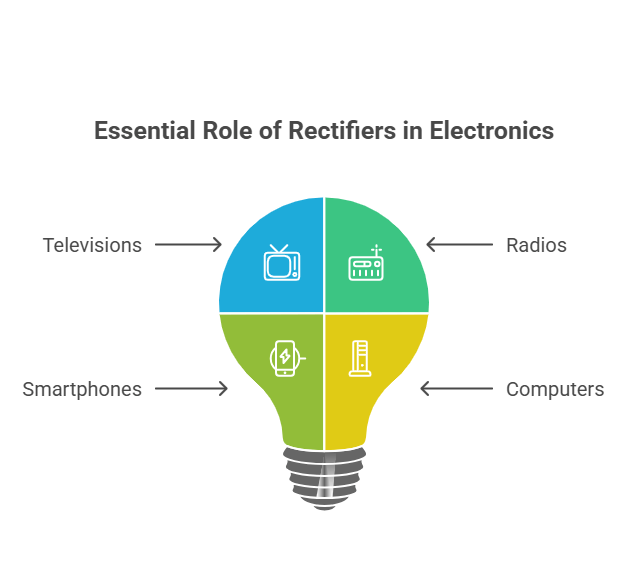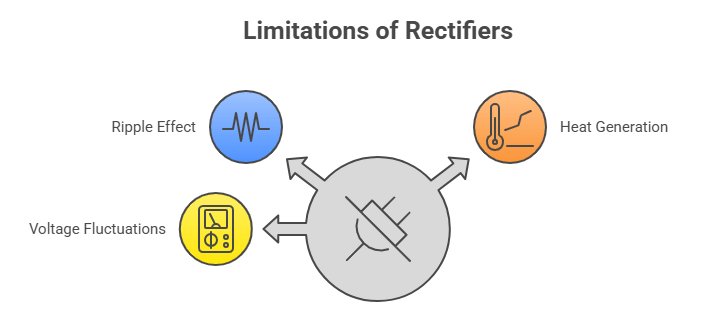Uses of Rectifier: Definition, Types, Advantages & Real-Life Applications

What is a Rectifier? Definition, Types, and Uses Explained
Introduction
Electricity powers nearly everything around us, but the form of that electricity matters. Mains power is usually Alternating Current (AC), while many devices require Direct Current (DC). A rectifier changes AC to DC so electronics and industrial systems can operate reliably.This article explains what a rectifier is, lists common types, and covers real-life applications, advantages, and limitations in a clear, easy-to-read format.

What is a Rectifier?
A rectifier is an electronic device that permits current to flow in only one direction, thereby converting Alternating Current (AC) into Direct Current (DC).
AC vs DC (quick overview)
- AC (Alternating Current): Changes direction periodically.
- DC (Direct Current): Flows steadily in a single direction.
Rectifiers are commonly implemented with diodes but are also available as vacuum-tube diodes, mercury-arc valves, silicon-controlled rectifiers (SCRs), and other power-conversion devices.
Common Types of Rectifiers
1. Half-Wave Rectifier
Converts only one half (positive or negative) of the AC waveform into DC. It is simple but inefficient for most power applications.
2. Full-Wave Rectifier
Uses both halves of the AC cycle to produce DC. More efficient and smoother than the half-wave design.
3. Bridge Rectifier
A widely used full-wave configuration that employs four diodes arranged in a bridge. It provides better output and does not need a center-tapped transformer.
Real-Life Uses of Rectifiers

Power Supplies
Rectifiers are core components of DC power supplies. Consumer electronics—phones, laptops, TVs—use rectifiers to turn mains AC into the DC voltages their circuits require.
Battery Charging
Chargers convert AC from the grid into DC to recharge batteries used in mobiles, vehicles, and backup systems (inverters and UPS). Rectifiers regulate the current used to charge safely and efficiently.
Electroplating
In electroplating, a steady DC current deposits metal ions onto a substrate. Rectifiers provide that steady current, enabling uniform coatings in industries like automotive and jewelry.
Electrolysis
Chemical processes such as electrolysis require DC to drive reactions—examples include hydrogen production (water splitting) and electrolytic refining of metals.
Welding Machines
Many welding systems use rectifiers to provide stable DC current for smoother arcs, better control, and consistent weld quality compared to AC welding.
Signal Demodulation
Rectifiers are used in radios and communication equipment for demodulation—extracting the audio or data signal from a carrier wave.
Advantages of Rectifiers
- Simple design and widely available components (diodes, SCRs, etc.).
- Provide continuous DC output suitable for most electronic circuits.
- Improve the performance and reliability of electronic devices.
- Scalable: used in small chargers and large industrial rectifier systems.
Limitations of Rectifiers

- Ripple Effect: Raw rectified output is pulsating DC and often needs filtering (capacitors, inductors) for cleaner DC.
- Heat Generation: Power losses produce heat; high-power rectifiers require proper cooling (air, water, or hybrid systems).
- Voltage Dependence: Output voltage can vary with input and load; precise regulation may require additional circuitry.
- Power Factor & Harmonics: Some rectifier types can create poor power factor or harmonic distortion unless corrected.
Conclusion
Rectifiers quietly enable modern electronics and industrial processes by converting AC to DC. From charging a phone to powering heavy electrochemical plants, rectifiers are essential building blocks of electrical systems. While they have limitations such as ripple and heat generation, proper design and filtering make them effective for nearly every DC application.
FAQs
Q1. What does a rectifier do?
Converts AC into DC for electronic devices.
Q2. Where are rectifiers used?
In chargers, laptops, TVs, welding machines, and industrial equipment.
Q3. What are the types of rectifiers?
Half-wave, full-wave, and bridge rectifiers.
Q4. Why is a bridge rectifier popular?
Provides smoother DC output without a center-tapped transformer.



